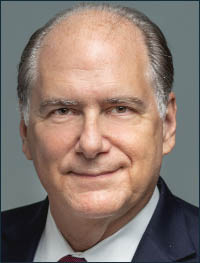The big interest rate cut finally happened — here’s what the mortgage industry had to say
Scotsman Guide – It finally happened: The Federal Reserve began its rate-lowering cycle this week, and it started with a bang.
The lending, credit and real estate industries are all buzzing about the 50-basis-point rate cut to the central bank’s benchmark rate.
Here’s what voices from all over the mortgage world are saying about the big move:
Justin Barry, partner, Morris, Manning & Martin

“The Federal Reserve’s rate cut today offers what could be a boost for the [commercial] real estate industry, particularly after nearly two years of sluggish transaction volume. While everyone is cautiously optimistic about the policy shift towards cuts, it remains uncertain how quickly development and transaction volume will recover and what lasting impact the high-rate environment has had on the industry. Rate cuts are finally here, but the commercial real estate recovery could be more tortoise than hare, so we need to temper our excitement. What may end up having a larger impact than rate cuts on a clogged transactional environment in certain asset classes is commercial real estate lenders having the willingness to take action on distressed loans as opposed to continuing to kick the can down the road. Time will tell.”
David Dworkin, president and CEO, National Housing Council

“The Federal Reserve’s recent rate cut is set to have far-reaching implications for the U.S. housing market, potentially alleviating affordability concerns and stimulating inventory growth.
“First-time homebuyers stand to benefit significantly from the rate reduction. For every 1-percentage-point decrease in mortgage rates, buyers of a median-priced home ($412,000 with 5% down) could save approximately $250 per month on their mortgage payments.
“The rate cut may also unlock a stagnant housing supply. Currently, over 76% of mortgage holders have rates below 5%, with 57% enjoying rates under 4%. These ‘locked-in’ homeowners have not been able to afford to sell their homes because of the cost of a new mortgage. As rates move down, more of them will be able to justify selling their homes. In addition to the shortage of new housing, the lack of existing inventory has increased home prices.”
Mike Fratantoni, senior vice president and chief economist, Mortgage Bankers Association

“Market participants had been divided about how much the Fed would cut at its meeting today, so this decision is likely to spur some rate volatility as investors adjust to this expected path for monetary policy. Governor Bowman dissented from this decision, preferring a 25-basis-point cut, but it seems that the rest of the Committee is more worried about the weakening job market.
“The FOMC projections highlighted that inflation is returning to target more quickly than the Committee had expected in June and that the unemployment rate has moved higher and is likely to stay higher than expected. While not likely to be in a recession, the U.S. economy is likely in for a period of slower economic growth.”
“Mortgage rates likely had this cut – and this expected rate path – priced in, and lower mortgage rates, now close to 6%, have resulted in much more refinance and some additional purchase activity in recent weeks. We do expect that if mortgage rates remain near these levels, it will support a stronger than typical fall housing market and suggest that next spring could see a real rebound in activity.”
Marty Green, principal, Polunsky Beitel Green

“For the first time since the current class of college seniors left high school, the Federal Reserve has finally reduced interest rates. It was a pleasant surprise that the Fed decided on a half-point reduction at this meeting rather than the more typical quarter-point move. One might consider this bolder move to be a recognition that the Fed is behind the curve in reducing rates. So, instead of the Fed saying rates have been higher for long enough, they are saying rates have been higher for perhaps a bit too long.
“But the bolder initial move, along with the indication that an additional half point of cuts are projected this year and a full point of cuts projected in 2025, is some signal that the Fed sees potential storm clouds on the horizon for the economy, notwithstanding the Fed’s current view that the economy is on solid ground.”
Ryan Marshall, CEO, Voxtur Analytics

“We are now in the beginning of the beginning of the Fed lowering rates. We know that the Fed will continue to cut rates throughout the year to keep the economy as strong as possible, but how far are they willing to go? We think they will keep cutting until rates are hovering at 5%, unless there is a strong economic event, like a major uptick in unemployment. In which case, the Fed will get more aggressive in cutting rates.”

Scott Olson, executive director, Community Home Lenders of America
“Today’s interest rate cuts are critical in creating a more affordable housing environment, particularly for first-time and low-to moderate-income homebuyers.”

Silvio Tavares, president and CEO, VantageScore
“While consumers overall remain credit-healthy, many are facing mounting financial challenges, including rising delinquency rates and the highest credit card balances we’ve seen in more than four years. Today’s cut helps, but it will take multiple cuts to have a noticeable impact on everyday finances.”
Eric Orenstein, senior director, Fitch Ratings
“The Fed’s 50-bps rate cut likely adds downward momentum for mortgage rates, which have already come down materially since May as treasuries have rallied. While not enough for a full-scale refi boom, an average 30-year rate approaching 6% does open up a meaningful slice of the market for refinancing. Mortgage originators stand to benefit, and will likely find the toughest times already behind them.”
This article originally appeared in Scotsman Guide.